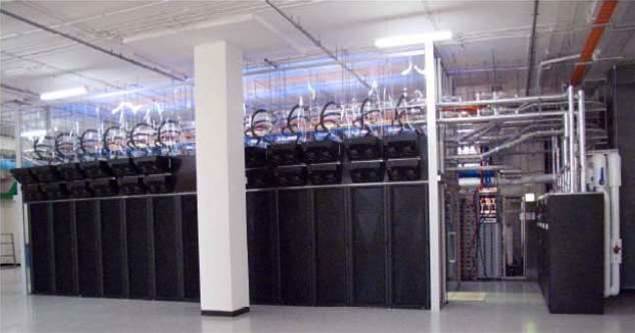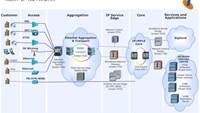Telstra has rolled out a new content delivery network (CDN) across its Next IP network, and plans to extend its content distribution using a dozen small data centres spread throughout Australia's major cities.
A CDN is a series of servers and, in this case, solid state storage devices spread to the edges of a broadband network which is used to provide subscribers with lower-latency access to popular content.
Many ISPs have chosen to partner with global providers of CDN networks, such as Akamai, EdgeCast and Limelight networks.
Telstra's new CDN was built over the past nine months using Cisco networking equipment.
Michael Lawrey, executive director of network and technology at Telstra Operations said the carrier chose to build its own CDN to provide flexibility and save on backhaul costs, whilst providing a superior experience to subscribers.
"This distribution network enhances the customer experience and provides lower network latency," Lawrey said.
Telstra "will save on backhaul because we only pull content across the network once, distributing it as close to the customer as we can," he said.
"We also have flexibility building our own CDN that we wouldn't have with the likes of Akamai," he said.
It could, for example, be used to respond to flash points in demand, such as a very popular sporting event in a given region.
Initially, the content delivery network will be used to provide better access to multimedia content. But Lawrey said that in future, it could be used for location-based advertising -- serving different ads depending on a user's location or preference.
Investment in small exchange data centres
The telco also announced plans to spend $14 million building out twelve "network media centres" -- small data centres housed within telephone exchanges -- across Australia's major cities over the next three to five years.
These network media centres will be located at existing ethernet aggregation points that Telstra has built for its Next IP network. There are a further 147 such aggregation points, should the telco see stronger than expected demand for its media content distribution.
"We are leveraging the latest cloud technology such that you can turn up and down capacity," Lawrey said. "We could turn another on in a 90-day cycle."
The first of these network media centres has been kitted out in the Sydney CBD enclave of Haymarket, with another under construction in Lonsdale, Melbourne.
The Haymarket prototype features up to 24 server and storage racks and two racks of network kit, capable of running at between 15kW to 30kW per rack, housed within a 35 square metre room kitted out with hot aisle containment and overhead cooling. The modular, pod-based design means that network equipment and servers/storage can be wheeled in and out with relative ease.
Telstra will house firewalls, database servers, app servers, web servers and storage within these racks.
Lawrey said these small distributed data centres can be used for content services alongside the CDN, but also to regionalise cloud compute services being offered from Telstra's two largest data centres.
"We could, for example, distribute our cloud services from these network media centres should a State Government have a requirement to have their data served from within their borders," he said.
Telstra chief operating officer Michael Rocca said it was too early to reveal how the telco will "seek to monetise" the CDN and network media centres.








.png&h=140&w=231&c=1&s=0)
_(20).jpg&h=140&w=231&c=1&s=0)






 iTnews Executive Retreat - Security Leaders Edition
iTnews Executive Retreat - Security Leaders Edition












_(1).jpg&h=140&w=231&c=1&s=0)



